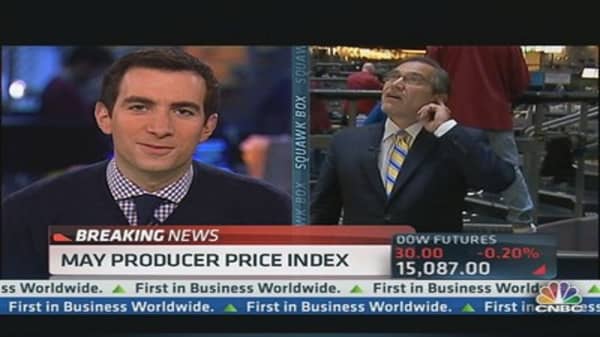Despite the pick-up last month, underlying price pressures remain muted and modest domestic demand makes it difficult for producers to pass on increased costs to consumers.
Wholesale prices excluding volatile food and energy costs ticked up 0.1 percent for a second straight month. In the 12 months through May, the so-called core PPI advanced 1.7 percent after rising by the same margin in April and March.
In other economic news, the U.S. current account deficit widened in the first quarter to $106.1 billion, a government report showed on Friday.
The Commerce Department said the current account deficit, which measures the flow of goods, services and investments into and out of the country, fell from a downwardly revised $102.3 billion in the fourth quarter.
Most of the widening came from a drop in the U.S. surplus on income and an increase in government transfers, the Commerce Department said.
That represented 2.7 percent of gross domestic product, hovering near the 2.6 percent recorded in the prior three-month period. As a share of GDP, the current account deficit was close to the record low in the second quarter of 2009.
Economists polled by Reuters expected the fourth-quarter current account gap to narrow slightly to $109.7 billion from a previously reported $110.4 billion for the third quarter.
In the first quarter, the deficit on goods increased to $179.1 billion from $182.4 billion in the prior quarter, the Commerce Department said.
The services surplus increased slightly to $55.5 billion in the first quarter from $55.0 billion in the fourth quarter and the surplus on income dropped to $52 billion in the first quarter, from $57 billion in the fourth.




